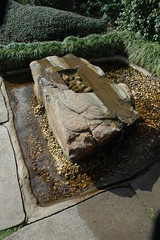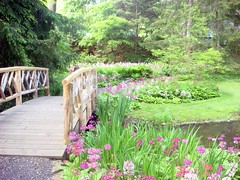
There are, of course, many ways of featuring water in a garden so it is crucial to establish at the outset the type of feature that you want. Essentially there are three general types:1. Feature with moving water (fountain, cascade, and stream)2. Still pond for fish and wildlife (and plants)3- Self-contained water 'container' (barrel, wall, fountain, raised pond) waterfall headerWhichever feature you choose, consider very carefully how best it can be designed into the context of your garden so that it feels and looks right. In this way you will ensure that the feature - and therefore the whole garden -is pleasing aesthetically.Firstly, decide on the mood or style of your feature, and how it will look as part of the overall garden: it could, for instance, be informal, with curving sides and associated planting to make a natural setting. Or, it could be very formal, comprising a water feature with lots of straight edges and very little planting.If you are planning a feature that is more complex than a simple hole in the ground filled with water, then it would be wise to produce
[more..]







